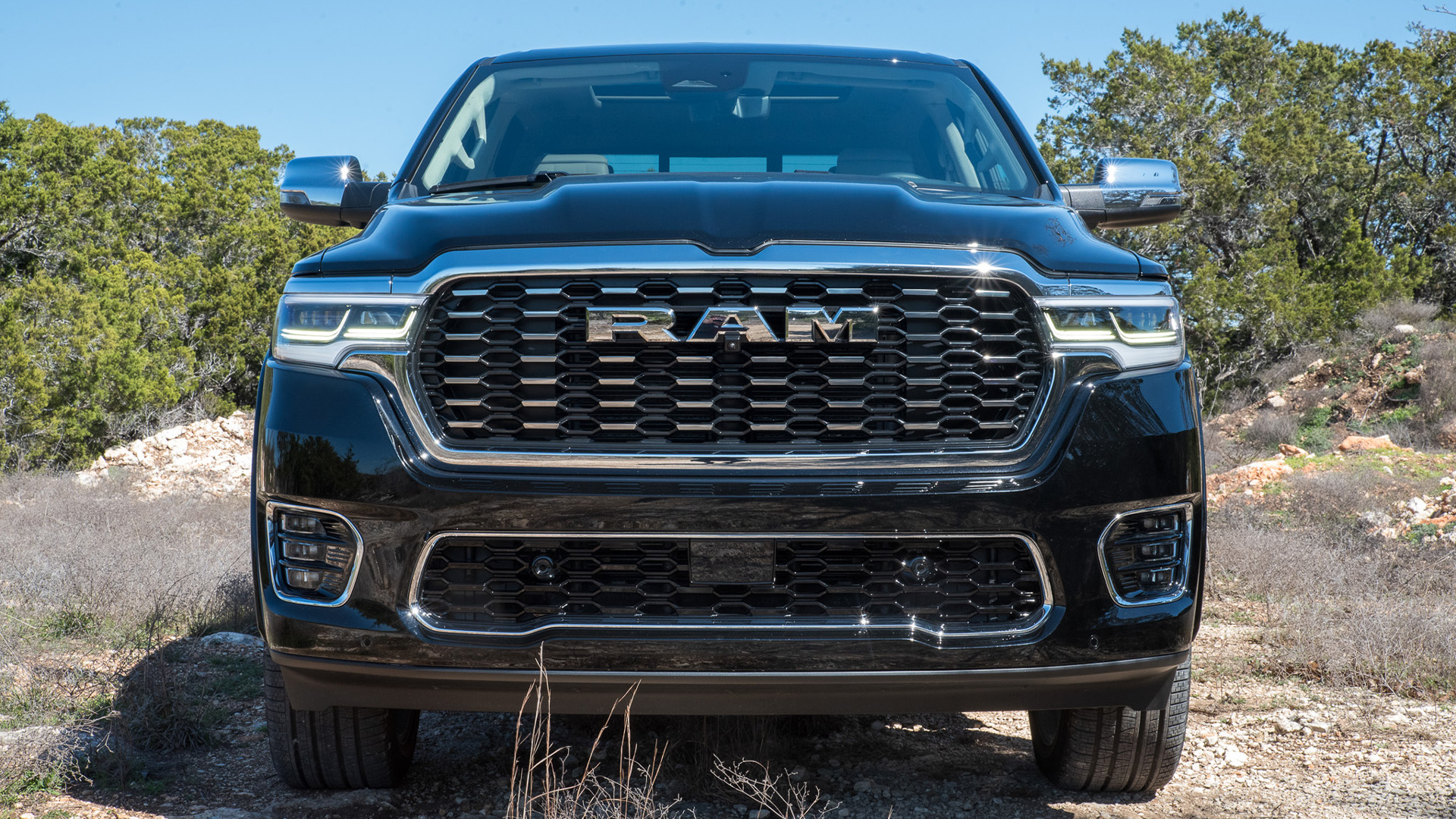

I wouldn’t have pegged Ram as the first American truck maker to ditch the V8. It clung to the 5.7-liter Hemi right up until it didn’t, offering it as the premiere engine option for two decades before dropping it completely on the 2025 Ram 1500. That’s a bold move, especially considering truck buyers can be fickle folk who value tradition over everything.
But I’ve got to say, the new pickup’s twin-turbo inline-six is dang good.

The news here isn’t that Ram added a small-displacement turbo engine to its lineup; Ford and General Motors are years ahead on that. The news is that Ram replaced its simple Hemi workhorse altogether with a heavily boosted power plant that’s unproven in the real world. Risk is inherent with such a big switch, and people are understandably wary of buying into the idea. In other words, there’s a reason you can still buy an F-150 or a Silverado with a V8.
Ram understands this and knows what the occasion calls for: Extreme performance. The new Hurricane 3.0-liter makes up to 540 horsepower, a best-in-class figure that beats Ford’s PowerBoost V6 hybrid by 110 hp and Chevy’s 6.2-liter V8 by 120 hp. This is made possible by 28 pounds of boost on the high-output Hurricane, which runs 9.5:1 compression and forged aluminum pistons.



Notably, the Ram’s inline-six tops out at 521 lb-ft of torque—an impressive number, though it’s behind both Ford and Toyota’s hybrid half-tons. When I asked Hurricane Chief Engineer Alan Falkowski why they prioritized horsepower over torque, he simply replied, “Acceleration.” That’s something the 3.0-liter does exceptionally well.
It doesn’t come on right away like you might expect with so-called “small” twin turbos. It picks up big-time after a 20-foot rollout and screeches the tires for what feels like a country mile. The ZF eight-speed transmission is what keeps the powertrain rooted in the world of trucks, but the engine keeps pushing into performance car territory. Stay in boost and this sucker zooms as it hits peak power at 6,200 rpm.
I haven’t spent nearly as much time in a standard output Hurricane; I only had a few hours with the high-output model as it was. Still, that engine’s 420 hp and 469 lb-ft of torque is a healthy leap over the old Hemi’s 395 hp and 410 lb-ft of torque. It’s optional on the base Tradesman and Big Horn while offered as standard on Rebel and Laramie, so no one is forced to settle with the entry-level Pentastar V6 if they have the scratch to spend. That may well be the happy middle ground for people who want more power than before but don’t need the absolute most.

With all this said, I can’t say I’m convinced of the Hurricane’s durability just yet. It’d be foolish to put all your confidence in a power plant that’s only just hit the scene. And Falkowski was forthcoming about the heat this thing puts off—as you’d expect, there’s a lot. Consider that along with big boost and high cylinder pressures, and the Hurricane’s internals have their work cut out for them.
But if everything can hold together, it’ll be one heck of a ride. The power is baffling and the sound is… fine. Much better than a Ford EcoBoost V6 but still nothing to write home about. My first impression of the Hurricane is enough for me to count it a winner in the short term, and if it can put a smile on your face for 150,000 miles or more, then it’ll be a huge W.
Got a tip or question for the author? Contact them directly: caleb@thedrive.com